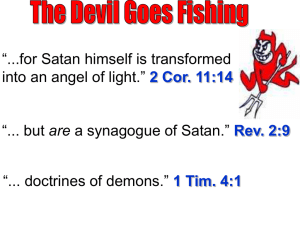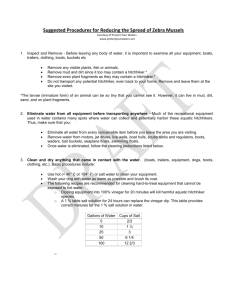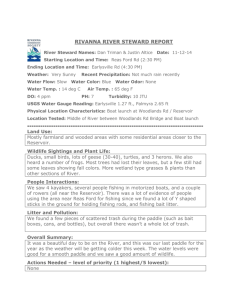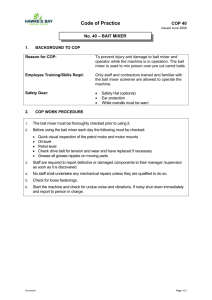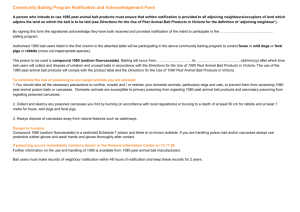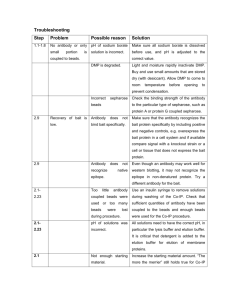Importation/possession/liberation of aquatic vertebrates and
advertisement
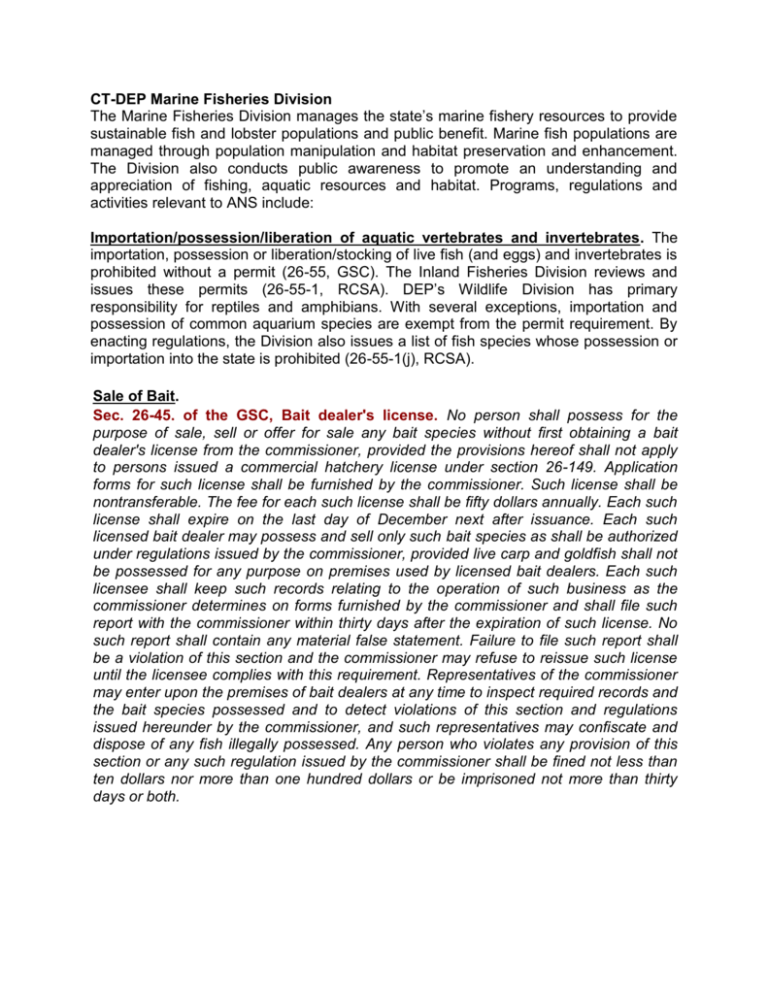
CT-DEP Marine Fisheries Division The Marine Fisheries Division manages the state’s marine fishery resources to provide sustainable fish and lobster populations and public benefit. Marine fish populations are managed through population manipulation and habitat preservation and enhancement. The Division also conducts public awareness to promote an understanding and appreciation of fishing, aquatic resources and habitat. Programs, regulations and activities relevant to ANS include: Importation/possession/liberation of aquatic vertebrates and invertebrates. The importation, possession or liberation/stocking of live fish (and eggs) and invertebrates is prohibited without a permit (26-55, GSC). The Inland Fisheries Division reviews and issues these permits (26-55-1, RCSA). DEP’s Wildlife Division has primary responsibility for reptiles and amphibians. With several exceptions, importation and possession of common aquarium species are exempt from the permit requirement. By enacting regulations, the Division also issues a list of fish species whose possession or importation into the state is prohibited (26-55-1(j), RCSA). Sale of Bait. Sec. 26-45. of the GSC, Bait dealer's license. No person shall possess for the purpose of sale, sell or offer for sale any bait species without first obtaining a bait dealer's license from the commissioner, provided the provisions hereof shall not apply to persons issued a commercial hatchery license under section 26-149. Application forms for such license shall be furnished by the commissioner. Such license shall be nontransferable. The fee for each such license shall be fifty dollars annually. Each such license shall expire on the last day of December next after issuance. Each such licensed bait dealer may possess and sell only such bait species as shall be authorized under regulations issued by the commissioner, provided live carp and goldfish shall not be possessed for any purpose on premises used by licensed bait dealers. Each such licensee shall keep such records relating to the operation of such business as the commissioner determines on forms furnished by the commissioner and shall file such report with the commissioner within thirty days after the expiration of such license. No such report shall contain any material false statement. Failure to file such report shall be a violation of this section and the commissioner may refuse to reissue such license until the licensee complies with this requirement. Representatives of the commissioner may enter upon the premises of bait dealers at any time to inspect required records and the bait species possessed and to detect violations of this section and regulations issued hereunder by the commissioner, and such representatives may confiscate and dispose of any fish illegally possessed. Any person who violates any provision of this section or any such regulation issued by the commissioner shall be fined not less than ten dollars nor more than one hundred dollars or be imprisoned not more than thirty days or both. Taking and Sale of Bait Species in the Marine District. Sec.26-142a-12. The Regulations of CT State Agencies. Taking and sale of bait species. (a) The following species of fish, amphibians, insects and crustaceans, to the exclusion of all other species, may be taken commercially in the inland region under an inland commercial bait license, or in the marine region under a marine commercial bait license, and may be offered for sale as bait species under a bait dealers license: (1) golden shiner or "pond shiner" (Notemigonus crysoleucas); (2) common shiner (Notropis cornutus); (3) fallfish (Semotilus corporalis); (4) creek chub (Semotilus atromaculatus); (5) spottail shiner or "river bait" (Notropis hudsonius); (6) bridle shiner (Notropis bifrenatus); (7) blacknose dace (Rhinichthys atratulus); (8) longnose dace (Rhinichthys cataractae); (9) pearl dace (Semotilus margarita); (10) bluntnose minnow (Pimephales notatus); (11) fathead minnow (Pimephales promelas); (12) cutlips minnow (Exoglossum maxillingua); (13) chub sucker (Erimyzon oblongus); (14) banded killifish (Fundulus diaphanus); (15) mummichug (Fundulus heteroclitus); (16) striped killifish (Fundulus majalis); (17) tidewater silverside (Menidia beryllina); (18) Atlantic silverside (Menidia menidia); (19) sand lance or "sand eels" (Ammodytes spp.); (20) frogs (except northern leopard frog, Rana pipiens); (21) perch bugs; (22) helgramites; (23) mayfly nymphs; (24) other aquatic insects; (25) crayfish; (26) green crabs (Carcinus maenas); (27) fiddler crabs (Uca sp.); (28) hermit crabs (Pagurus sp.). (b) In addition to the bait species listed in subsection (a), the following species, if legally taken under the appropriate commercial license and meeting the minimum legal length requirements, specified in section 26-142a-8a of these regulations, may be offered for sale as bait under a bait dealer's license: (1) menhaden (Brevoortia tyrannus); (2) alewives (Alosa pseudoharengus); (3) blueback or "glut" herring (Alosa aestivalis); (4) American eel (Anguilla rostrata); (5) butterfish (Peprilus triacanthus); (6) Atlantic mackerel (Scomber scombrus); (7) whiting (Merluccius bilinearis); (8) squid (Loligo sp.); (9) Atlantic herring (Clupea harengus); (10) Horseshoe crabs (Limulus polyphemus). (c) Each bait dealer shall keep the following records on forms furnished by the department: (1) the date and quantity by species and source of each consignment of bait received by the licensee; (2) the total annual sale of bait by species made by the licensee during the license period. The above records shall be filed with the department within thirty days after the expiration date of the license. (d) This regulation does not apply to fish used to bait lobster pots or eel pots. Biological surveys. The Division performs seine and trawl surveys Long Island Sound each year. Potential problem species are identified and their status monitored. Education and Public outreach. The Division provides information about ANS to anglers and the general public. The primary vehicle for distribution of information is a two-page spread in the CT Angler’s Guide (regulations booklet issued annually) and the DEP marine fisheries web site. Control of aquatic plants and animals. Although rarely used, DEP does have statutatory authority (26-22, GSC) to remove undesirable plants or animals from the waters of the state when such measures are in the interest of fisheries management.


